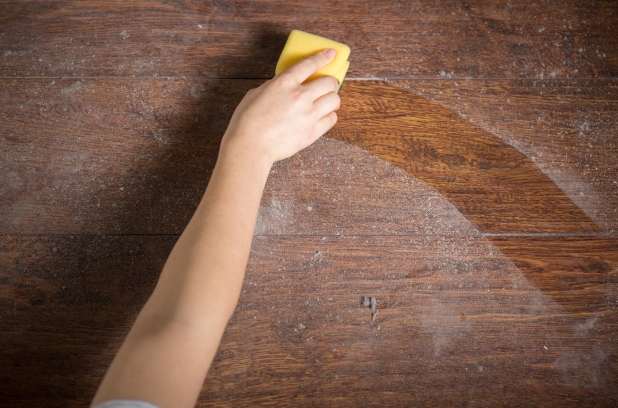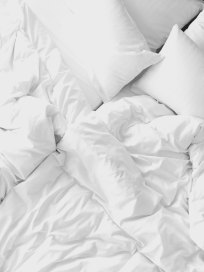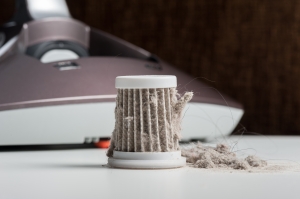
Dust Mites are microscopic, pest like insects that make their homes in household dust. They typically go unseen by the naked eye and pass their time by eating dead skin flakes and dander.
Are Dust Mites in MY Home?

You may be thinking that dust mites are only common in extremely dirty households but Dust Mites occur naturally and can appear in nearly all homes, especially if you’re in a humid climate. Dust Mites love tropical weather because they absorb moisture in the air instead of drinking water. They thrive in older homes and lower income residences where mold may be present.
How Do Dust Mites Affect My Health?
Environments with excessive dust mites can cause an array of issues for people sensitive to allergies or anyone who has asthma. Dust Mites are known by the American Lung Association to trigger asthma attacks. These allergens can cause an immune system response inducing either milder symptoms, like an occasional runny nose, watery eyes, and sneezing or severe symptoms resulting in coughing, congestion, facial pressure, or a severe asthma attack.
How to Detect & Evict Your Tiny Unwanted Guests
 Dust mites love to live in your bedroom, snuggled in your bedding. They also like persisting deep in the stuffing of sofas, chairs, mattresses, pillows and carpeting. Keep in mind that Dust mites are NOT bed bugs and while unpleasant, are generally not harmful.
Dust mites love to live in your bedroom, snuggled in your bedding. They also like persisting deep in the stuffing of sofas, chairs, mattresses, pillows and carpeting. Keep in mind that Dust mites are NOT bed bugs and while unpleasant, are generally not harmful.
Here’s our general plan for keeping Dust Mite populations low:
Cover mattresses and pillows in zippered dust proof covers. These covers are made of a material with pores too small to let dust mites and their waste product through. They are also called allergen-impermeable.
Avoid fabrics that cannot be washed in hot water. Cold water isn’t as effective. Dry cleaning kills all dust mites and is also good for removing dust mites from living in fabrics. If possible, it’s best to avoid wall-to-wall carpeting, curtains, blinds, upholstered furniture, wool and synthetic fibers, down-filled covers and pillows in the bedroom. Switch traditional stuffed animals with washable ones. Consider replacing carpeting to help alleviate allergies in your home.
Use a certified filter with your central furnace and air conditioning unit. This can help trap dust mites from your entire home. Freestanding air cleaners only filter air in a limited area. Avoid devices that treat air with heat, electrostatic ions, or ozone.
Keep the humidity in your home less than 50 percent. This can be done with a dehumidifier and/or air conditioner.
Maintenance
Wash your sheets and blankets weekly in hot water. You have to wash them in water that’s at least 130 degrees Fahrenheit or more to kill dust mites. Non-washable bedding can be frozen overnight.
Have someone without a dust mite allergy clean your bedroom or wear a filtering mask when dusting or vacuuming. Try to stay out of the bedroom for a while after dusting and vacuuming as it stirs up dust. When dusting, use a damp mop or damp cloth to reduce the amount of dust stirred up.

Vacuuming is not enough to remove all dust mites and their waste but it can help. CERTIFIED vacuums with high efficiency filters are scientifically tested and verified as more suitable for making your home healthier and can keep dust from flying back into the air. Make sure it has a double-layered micro filter bag or a HEPA filter.
Minimize cluttered areas in your home. Stacks of papers, books, and piles of junk – anything can collect dust and if it isn’t being used or cleaned frequently, is likely the perfect dust mite home. Regular de-cluttering will help control the allergens present in your home.
Even if you find that you have Dust Mites, it doesn’t mean your home isn’t clean. According to the Asthma and Allergy Foundation if America, dust mites live in almost every home in most areas of the world, no matter how clean. The goal should be lower their effects and reducing their numbers rather than trying to completely rid your home of them. Start in the bedroom and work your way out throughout the rest of the home.
Further Reading:
American Lung Association: https://www.lung.org/our-initiatives/healthy-air/indoor/indoor-air-pollutants/dust-mites.html
Asthma and Allergy Foundation of America: https://www.aafa.org/dust-mite-allergy/
